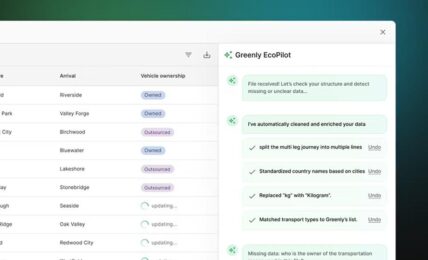The Science Based Targets initiative (SBTi) announced today the launch of the Forest, Land and Agriculture (FLAG) Science Based Target Setting Guidance, providing a standard method for companies in land-based sectors to set science-based emissions reduction targets aligned with global climate goals.
Founded in 2015, SBTi was formed as a collaboration between CDP, World Resources Institute (WRI), the World Wide Fund for Nature (WWF), and the United Nations Global Compact (UNGC), with the goal to establish science-based environmental target setting as a standard corporate practice.
Last year, SBTi launched a Net Zero Standard, which it will use to assess and certify corporate commitments to achieve net zero emissions, and earlier this year, the organization published a draft Net-Zero Standard for Financial Institutions. SBTi has revealed plans to extend the range of its guidance and resources for specific sectors, including the FLAG, Aviation and Maritime, Cement, Steel, Buildings and Chemicals sectors.
Land-intensive sectors have emerged as a major focus area for climate action, accounting for a significant proportion of greenhouse gas (GHG) emissions, and are often among the most difficult emissions sources to address. The Forest, Land and Agriculture (FLAG) sector represents nearly a quarter of global GHG emissions, second only to the energy sector.
Martha Stevenson, WWF Senior Director and Senior Advisor for the SBTi, said:
“The food we eat, the clothes we wear, the wood used in the houses where we live and the medicines that heal us are available thanks to the forests, lands and agriculture that sustain us. However, the commercialization of our natural environment is a significant source of emissions and is also the sector most vulnerable to the effects of global warming.”
While SBTi noted that many companies in the sector have set or committed to establish net zero targets, many do not currently account for land-based emissions, such as those resulting from forestry and agricultural production, land use change and land management.
According to SBTi, the new guidance is the first standard method for companies to set science-based targets that include land-based emission reductions and removals.
One of the key requirements under the new standard method is for companies to make a commitment for zero deforestation by 2025. According to SBTi, deforestation makes up the vast majority – approximately 80% – of the mitigation potential from land use change.
Other requirements include setting near-term 5-10 year emission reduction targets in line with limiting warming to 1.5°C, and long-term targets to reduce at least 74% of emissions by no later than 2050.
The guidance also highlights the sector’s significant mitigation potential from carbon removal activities, and requires companies to account for GHG removals, like soil carbon sequestration and improved forest management, in their near-term targets, but notes that removals are not a substitute for deep emissions cuts.
SBTi stated that companies with land-related emissions that contribute to 20% or more of their overall emissions will now be required to set FLAG science-based targets.
Christa Anderson, Director at WWF and co-lead of the SBTi FLAG project, said:
“The next few years are critical in our efforts to address the climate crisis, and this guidance addresses 22% of global emissions that have largely been ignored to date. The food, land and agriculture sector has the potential to both cut emissions and enhance carbon sinks at the pace to keep the goal of limiting climate change to 1.5°C within reach.”
The post SBTi Launches Guidance for Science Based Climate Targets for Ag, Forest and Land-Based Sectors appeared first on ESG Today.



